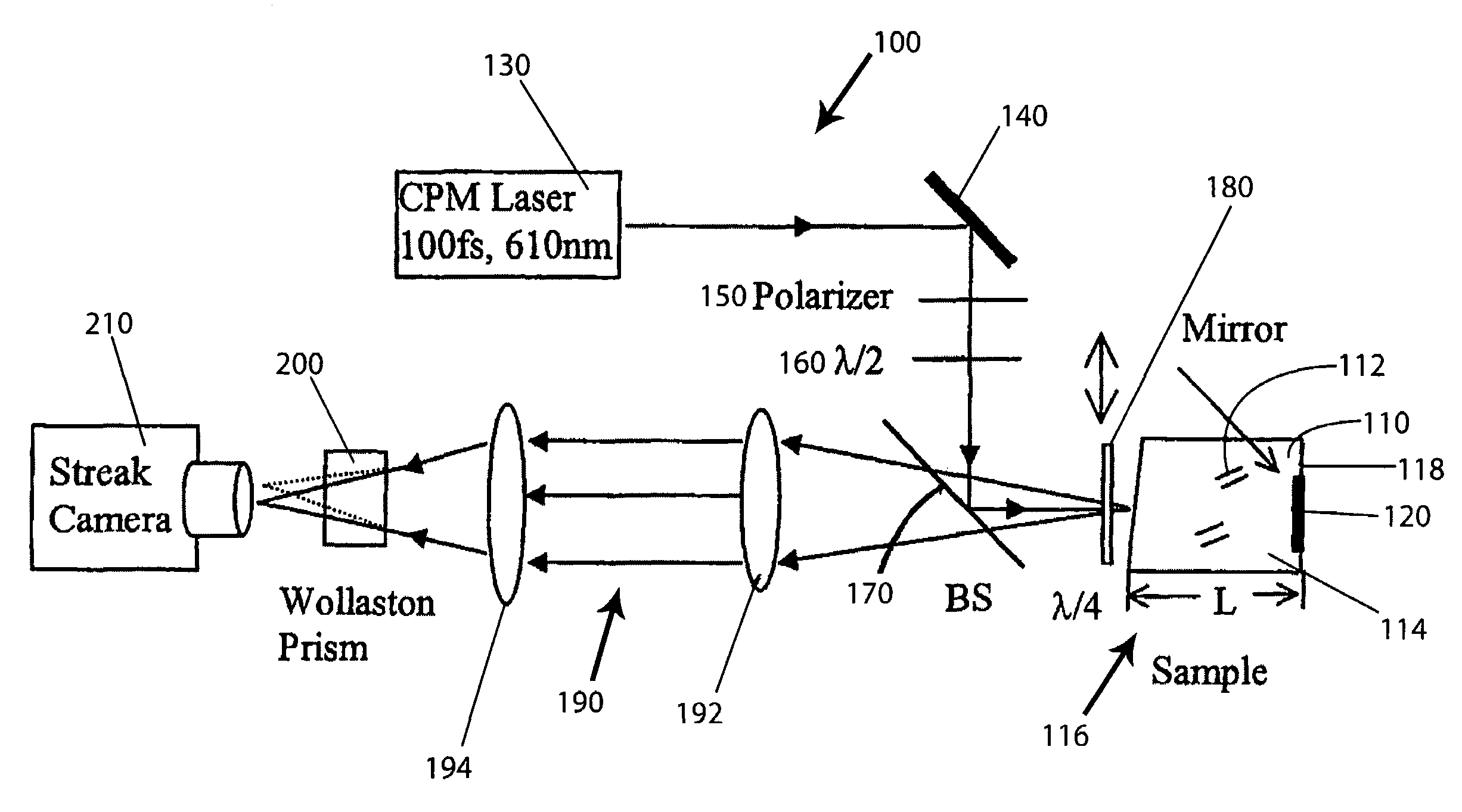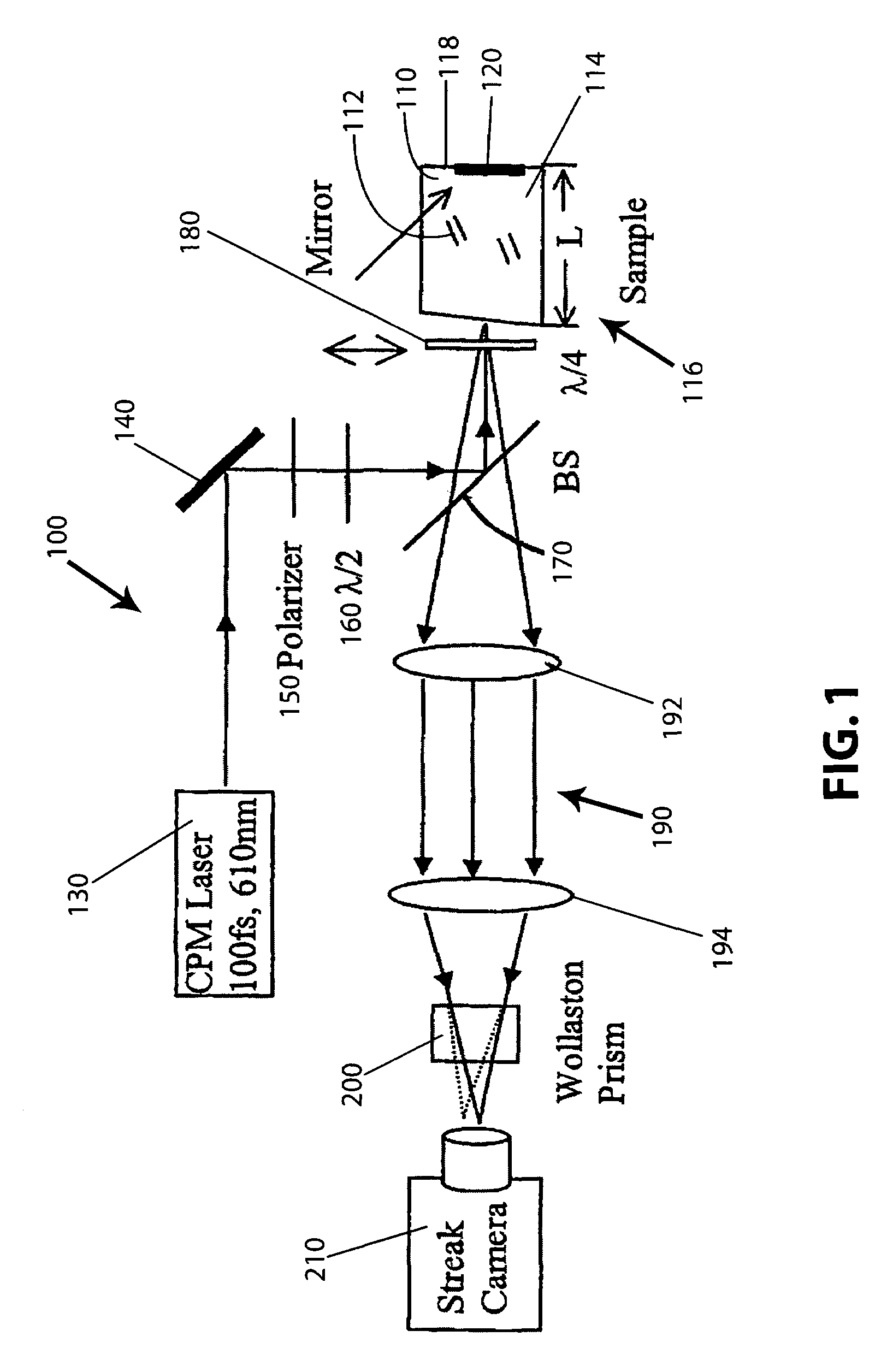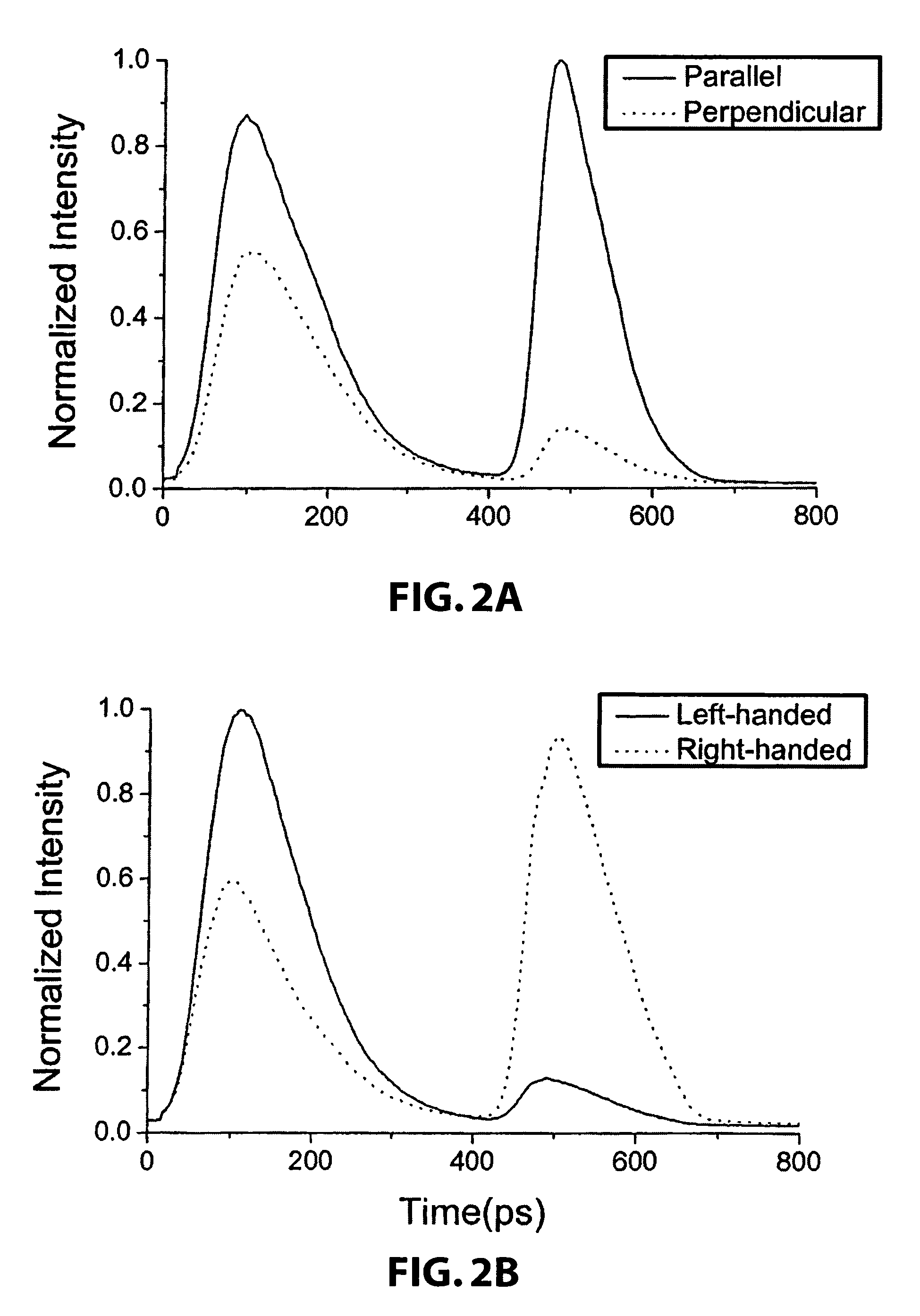Imaging systems and methods to improve backscattering imaging using circular polarization memory
a technology of backscattering imaging and imaging system, applied in angiography, optical radiation measurement, instruments, etc., can solve the problems of blurry image quality of artery surface and subsurface, laser surgery and laser cauterizing tissue normally is accompanied by the unwanted production of cloud of smoke and vaporized particles
- Summary
- Abstract
- Description
- Claims
- Application Information
AI Technical Summary
Benefits of technology
Problems solved by technology
Method used
Image
Examples
Embodiment Construction
[0023]The present invention is directed to a method or technique, as well as an imaging arrangement or system, which can improve the quality of image of an object that is obscured inside a highly scattering medium, such as a turbid medium, that consists of randomly distributed particles. As a result of the turbid medium, prevalent backscattering results when an object inside the turbid medium is illuminate. If the backscattered light is not depolarized, one anticipates that it will consist mainly of the circularly polarization state corresponding to that which would result from specular reflection by a perfectly conducting plate. However, this intuition is correct only for particles in the medium whose sizes are smaller than the wavelength. For larger particles in the medium, the opposite is true. The unexpected memory of the incident circular polarization is called polarization memory. As used herein and according to one aspect of the present invention, “large particles” and “large...
PUM
 Login to View More
Login to View More Abstract
Description
Claims
Application Information
 Login to View More
Login to View More - R&D
- Intellectual Property
- Life Sciences
- Materials
- Tech Scout
- Unparalleled Data Quality
- Higher Quality Content
- 60% Fewer Hallucinations
Browse by: Latest US Patents, China's latest patents, Technical Efficacy Thesaurus, Application Domain, Technology Topic, Popular Technical Reports.
© 2025 PatSnap. All rights reserved.Legal|Privacy policy|Modern Slavery Act Transparency Statement|Sitemap|About US| Contact US: help@patsnap.com



